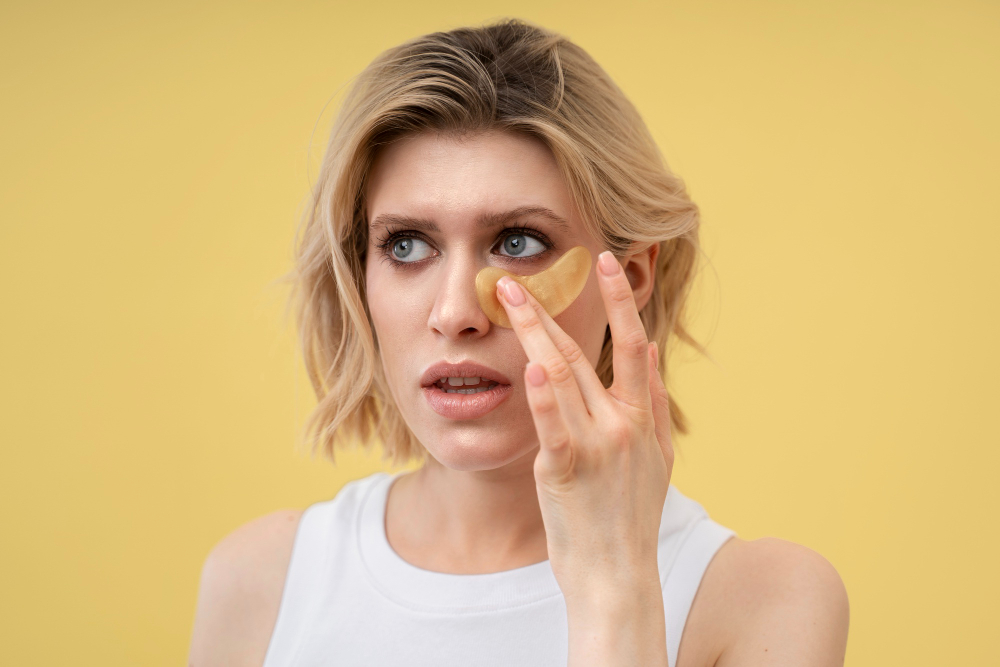What Causes Dark Circles Under the Eyes?
In the morning, when you look in the mirror, one of the first things you may notice are the dark circles under your eyes – those stubborn shadows that make you look tired, worn-out, or even unwell. While many people blame lack of sleep, the truth is that the phenomenon is much more complex.
What Causes Dark Circles Under the Eyes?
There are several factors behind the formation of dark circles, including:
- Genetic predisposition: If family members also have dark circles, chances are you will too.
- Stress and lack of sleep: Chronic fatigue and poor sleep quality can deepen the shadows under the eyes.
- Dehydration: When the body lacks water, skin loses elasticity and tone, making dark areas more prominent.
- Aging: Over time, the skin becomes thinner, collagen and fat layers diminish, and blood vessels become more visible, creating a darker appearance.
- Allergies and irritation: Frequent rubbing due to allergies, dry eyes, or irritating cosmetics can worsen the condition.
Other possible causes:
- Hyperpigmentation (increased melanin production)
- Iron-deficiency anemia
- Excessive sun exposure
- Hormonal imbalances
- Skin inflammation
- Thyroid disorders
- Certain medications, such as glaucoma eye drops
- Poor circulation, liver or kidney dysfunction
What Does the Color Reveal?
The color of the circles can be telling:
- Bluish-purple tint: Caused by thin skin revealing the underlying capillaries
- Brownish tone: Usually due to pigmentation changes, often genetically determined
- Red-edged circles: Signs of inflammation or irritation
What Can We Do About Dark Circles?
Although hereditary factors often play a role, several lifestyle and cosmetic solutions can help reduce the appearance of dark circles.
1. Basic Lifestyle Changes
- Regular, restful sleep: Aim for at least 7–8 hours in a comfortable sleep environment
- Proper hydration: Drink 2–2.5 liters of water per day
- Healthy diet: Include iron, vitamin C, and antioxidant-rich foods
- Lower salt intake: Too much salt can cause water retention and puffiness
2. Skin-Friendly Habits
- Don’t rub your eyes! This can cause tiny blood vessels to rupture, leading to dark discoloration.
- Avoid irritating cosmetics; switch to hypoallergenic products.
- Use artificial tears and allergy treatments for dry eyes or hay fever.
- Eye creams containing nourishing ingredients like hyaluronic acid, caffeine, or vitamin C can help lighten dark circles.
- Sun protection: Daily use of sunscreen is recommended, as UV rays can worsen pigmentation.
Cosmetic and Medical Treatment Options
If lifestyle changes don’t produce noticeable results, cosmetic procedures may be considered.
Hyaluronic Acid Fillers
This popular treatment helps plump up the hollow, dark under-eye area:
- Thanks to its natural water-retaining properties, hyaluronic acid makes the skin appear fuller and more refreshed.
- The procedure is quick, performed with local anesthesia, involves minimal discomfort, and requires a short recovery time.
- It is crucial that a trained medical professional, preferably an ophthalmologist, performs the procedure, as the eye area is delicate and rich in blood vessels and nerves. Improper application can lead to serious complications (e.g., swelling, bruising, vision problems).
Other Aesthetic Treatments:
- Laser treatments to reduce pigmentation
- Mesotherapy or PRP (platelet-rich plasma) therapy
- Microneedling to boost collagen production
- Skin-lightening creams with retinol or vitamin C
In Summary: Not Just Fatigue
Dark circles under the eyes can be aesthetically troubling, but they usually don’t signal serious health issues – although sudden or worsening changes shouldn’t be ignored. A conscious lifestyle, proper skincare, and expert treatments can help your eyes look fresh and well-rested again.








